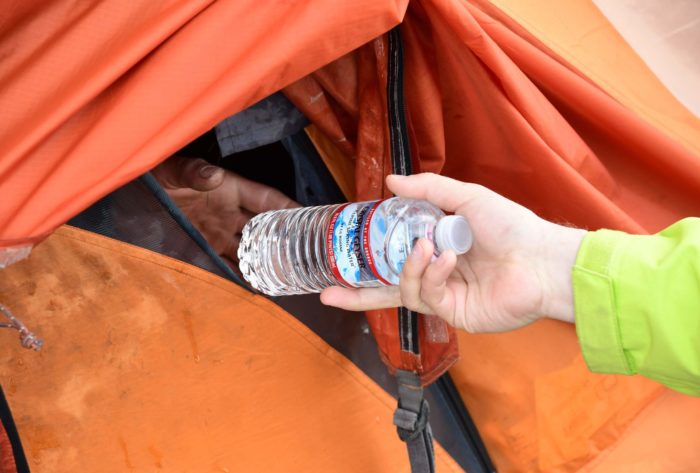
“Care, respect, funding, and coordination are the needed alternatives to fear, anger, and sweeping encampments away.”
By Betsy Wells, ETS Board member—
I serve on the Board of Evergreen Treatment Services (ETS), a non-profit that provides opioid use disorder treatment and, through its REACH team, a variety of outreach and case management services for people living outside or with some involvement in the criminal legal system. Many of my friends have responded wonderfully to my requests for donations to ETS, including a recent birthday fundraiser. Thank you, to all who have given!
Yesterday, I had the privilege of shadowing two REACH outreach workers assigned to the encampment in Woodland Park (Seattle). I’ll call them Joe and Annie to protect their privacy.
On this chilly, rainy day, the two picked me up at their downtown office. We entered the park through a locked gate for which the Parks Department gives REACH the key. REACH has agreed to provide a consistent presence of two workers to the Woodland Park encampment.
When we first drove into the camping area, I thought immediately that I can see why people have gravitated to this area. Those of us who go camping for fun would find this an attractive campground. It is a woodsy area with plenty of space for campers to spread out and have privacy from each other but still the possibility of community. Tents and tent-like structures built from a variety of materials are dotted around the area.
We parked, and the two workers loaded up their backpacks with bottles of water, snacks, and packets of clean syringes (to prevent blood-borne infections from re-use/sharing syringes). Joe and Annie spend at least 3 days a week at this encampment, sometimes just the two of them, sometimes working with “Bob,” a housing specialist from the city’s Hope Team, and sometimes accompanied by a nurse who can provide on-site care or refer, if needed.
Today, they have a few residents they want to make sure to meet. Three are in line for, or on the verge of, getting into housing, either tiny house or apartment. They don’t intrude on residents’ space. On approaching a tent, Joe announces, “Good afternoon, I’m Joe from REACH. Just checking in to see how you are doing.” If someone appears at the tent door, Joe and Annie are ready with waters and snacks and ask if the person needs anything.
One man asks about housing, can they help his wife and him get housing. Joe takes their names and asks what kind of housing they are open to. He commits to returning to them when Bob is there later in the week. One couple has qualified for apartment housing and has a source of income to pay for it. Annie goes over the next steps with the woman and agrees to meet her the next day and to take her to look at the available units. At another tent, Joe checks to make sure the occupant has contacted his caseworker. He is set up to move into a tiny house but needs to contact the worker to confirm.
Annie and Joe tell me most of the people they contact in this encampment are interested in housing. There are barriers, including lack of available housing and lack of easy coordination among agencies. The new King County Regional Homelessness Authority (RHA) helps with the latter, but the RHA is new; housing scarcity and gaps in coordination are a frustration for Annie and Joe, as they see the immediate need but are not able to act quickly to access housing.
A conversation with another occupant is about ID. Free phones are available, but one needs ID to get one. Annie also explains to me that some shelters require ID. People may have lost their ID or may have other reasons for not having one. Annie and Joe help with that.
As we walk around, I can’t help reflecting on conversations I have with friends and acquaintances who are frustrated or angry about encampments. In these conversations, I try to explain the complexities of getting someone housed. I point out that sweeps just move people elsewhere and that the NIMBY (not in my back yard) phenomenon keeps appropriate services and housing sites from being easily located. Friends who are good and generous people seem to find themselves not feeling generous toward community members who are camping outside. I believe this is largely due to the stigma associated with drug use. Yes, Annie and Joe distributed clean syringes at some tents yesterday afternoon. We see those living outside as bad people who have made bad choices, as potentially not worthy of respect and care. Criminalization of drug use in our society has not helped this situation.
The circumstances that have resulted in the large number of encampments in our city are complicated, and I don’t pretend to have solutions. I came away from my time in Woodland Park committed to supporting more housing, more available treatment slots, more Annies and Joes, and better coordination among services. My motivation for writing this piece is to spread the word that care, respect, funding, and coordination are the needed alternatives to fear, anger, and sweeping encampments away. Thanks to everyone who is helping in some way.
And, thank you, Annie and Joe, for giving me a window into your world.




